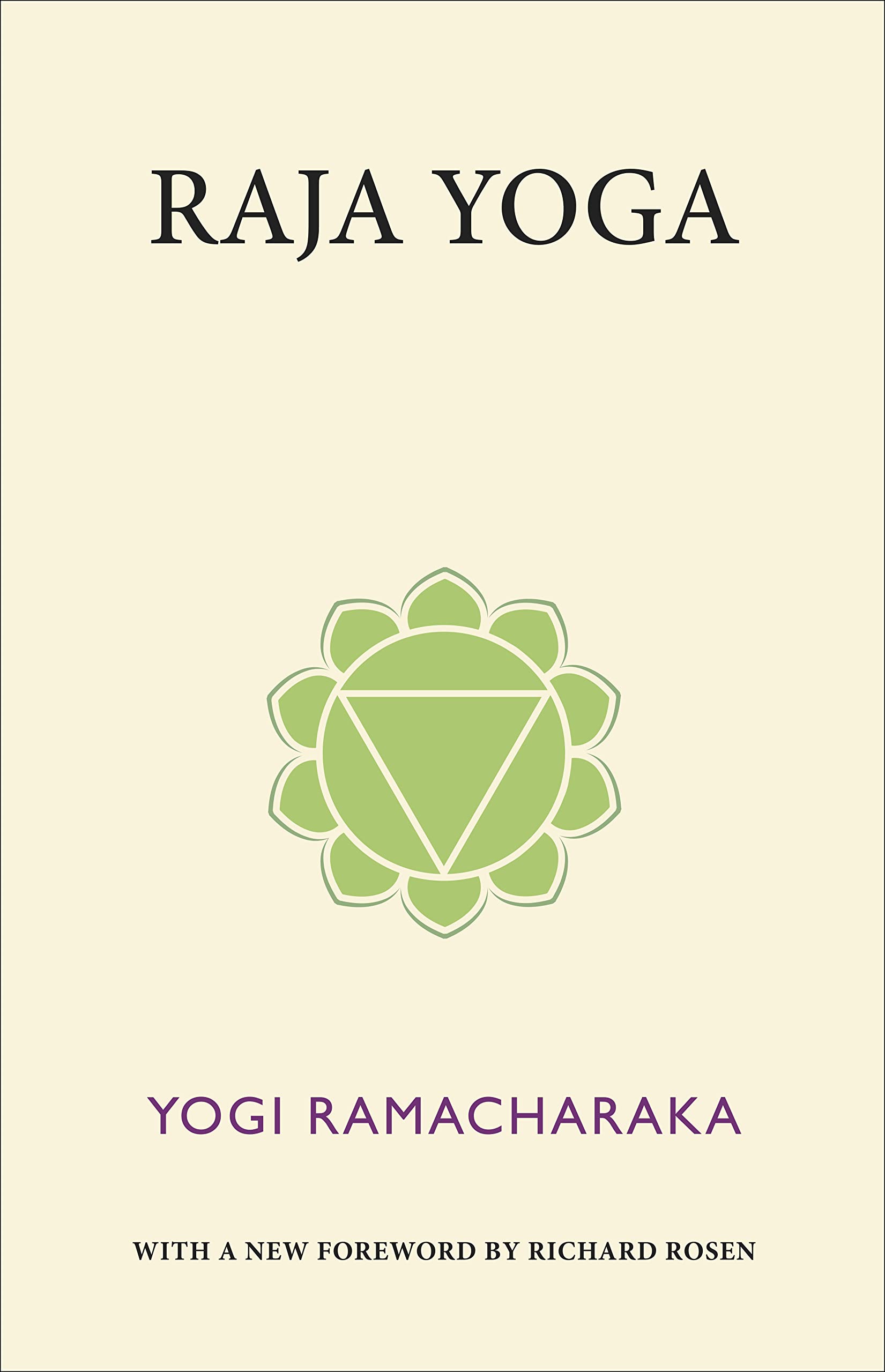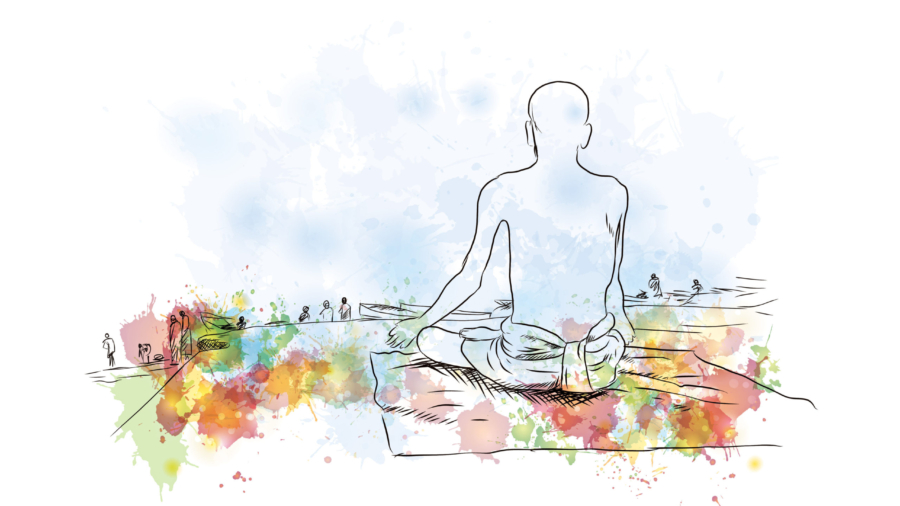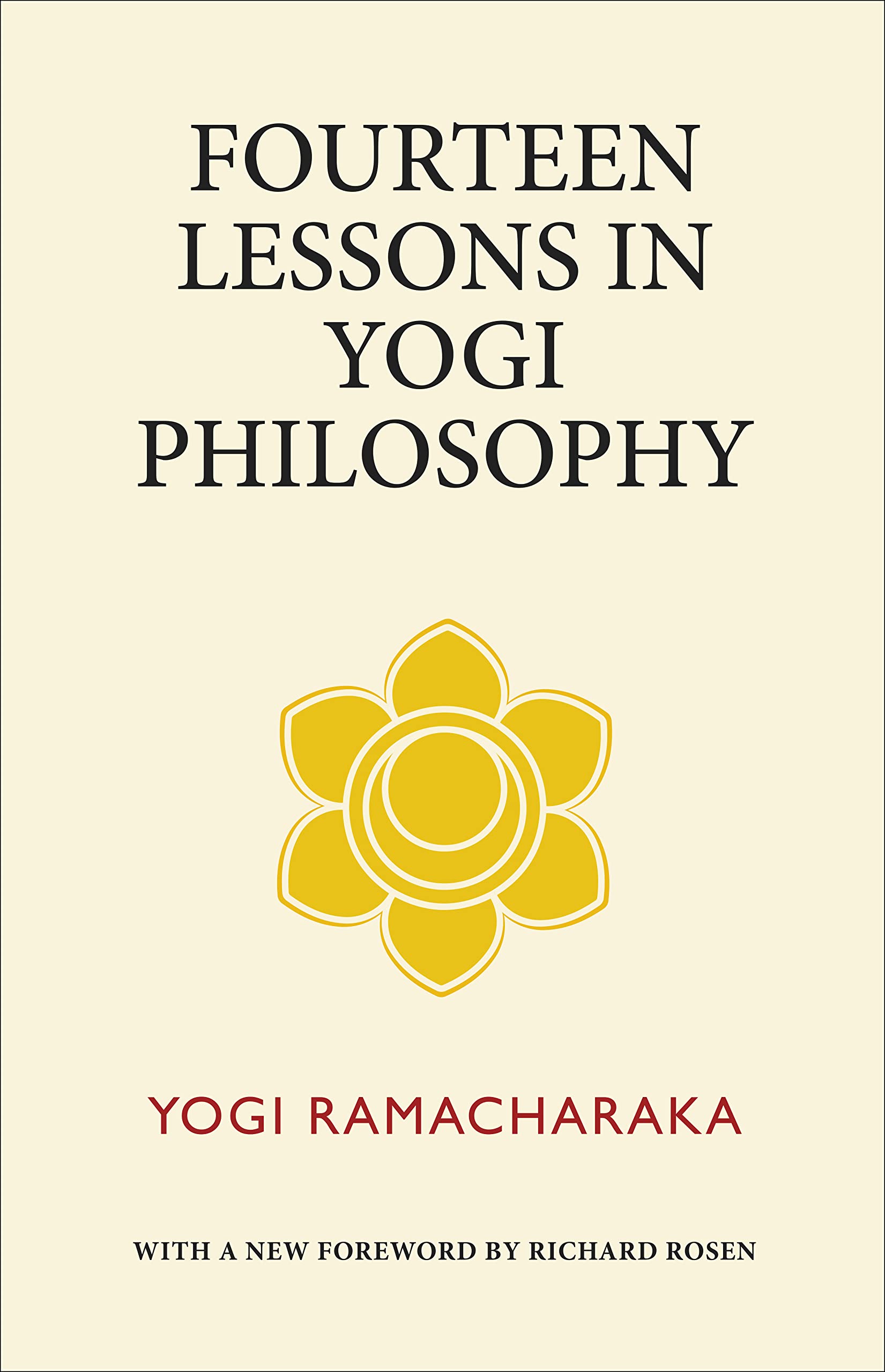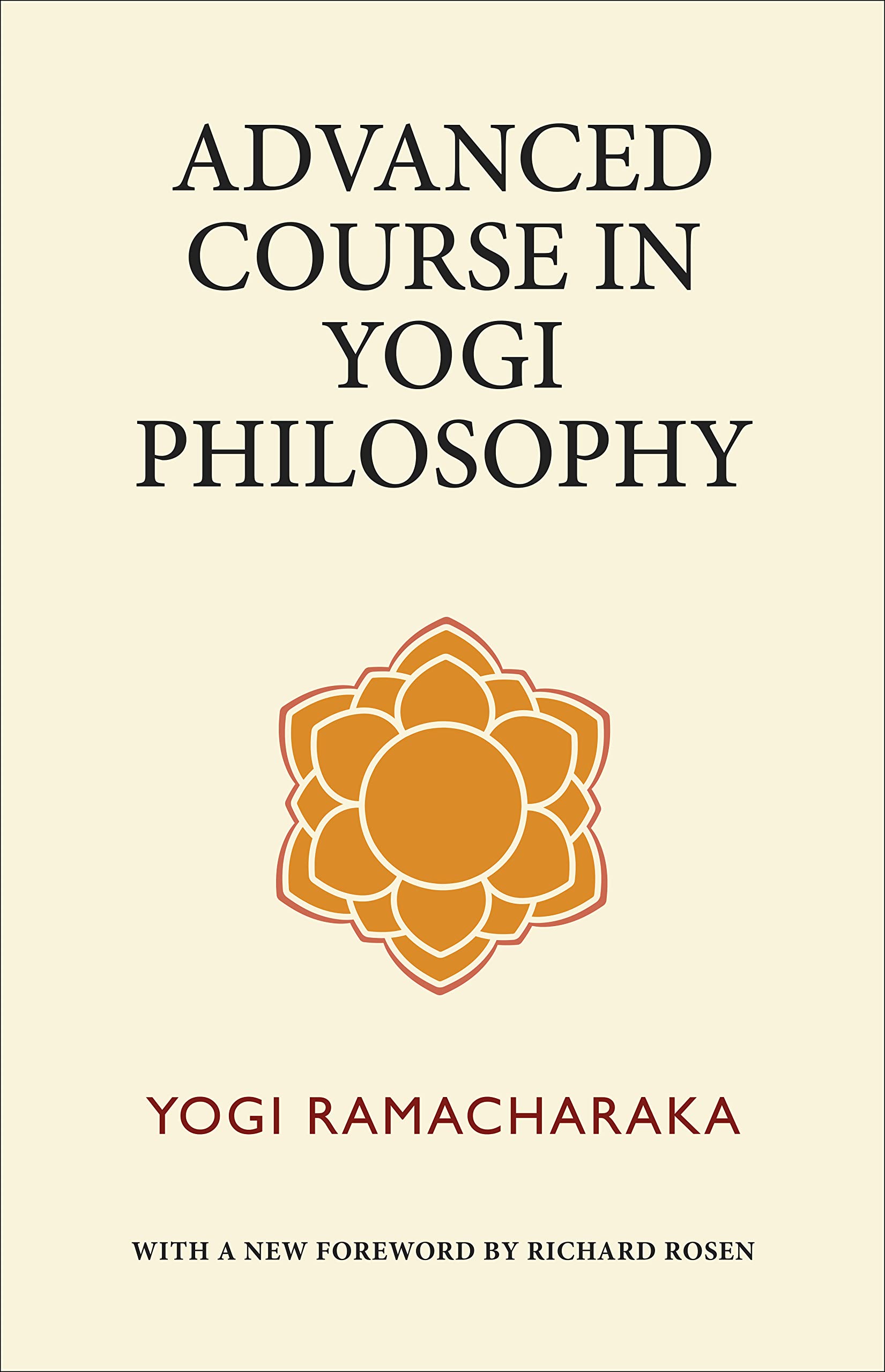by Richard Rosen
And in the home of the novelist
There is a satin-like bow on an harp.
You enter and pass hall after hall,
Conservatory follows conservatory,
Lilies lift their white symbolical cups,
Whence their symbolical pollen has been excerpted,
Near them I noticed an harp
And the blue satin ribbon,
And the copy of Hatha Yoga.
– Ezra Pound, from Moeurs Contemporaines V (1919)
Hatha Yoga is an actual book, not a product of the poet’s imagination. I can say this with confidence because I have a copy, bought at a used book store for $15. Subtitled The Yogi Philosophy of Physical Well-Being, it was first published, remarkably enough, in 1904, one of the first—if not the first—books written about Hatha Yoga in English for a popular audience. The title page attributes the work to a Yogi Ramacharaka who, from 1903 to 1909, churned out fourteen books on subjects ranging from Hindu philosophy and yoga to Oriental occultism, mystic Christianity, life after death and reincarnation, and the “science of psychic healing.”
Who was Yogi Ramacharaka?
His first publisher, the Yogi Publication Society, which in the early 1900s was headquartered in Chicago, tells the following story about him: Born in India around 1799, Yogi Ramacharaka, like several of the seekers in this book, ventured out early in life to hunt for the Truth. He spent many years trudging back and forth across “the East,” fasting, meditating, and digging through the libraries of countless lamaseries and monasteries. Around 1865, after having passed what must have been a good forty years on his quest, Yogi Ramacharaka finally discovered the unnamed “basis for his philosophy.” At about the same time, he acquired a student, the eight-year-old son of a Brahmin family, whom we know as Baba Bharata. Yogi Ramacharaka then resumed his peripatetic ways, retracing the steps of his life’s journey, this time with little Baba in tow.
We next hear about the wanderers almost thirty years later, in 1893. Now 94, and sensing that he would soon shuffle off his mortal coil, Yogi Ramacharaka deputized Baba to spread his teaching near and far. You may recall that in that year, the World’s Parliament of Religions convened in Chicago as part of the World’s Fair. Baba realized that such a gathering would make the perfect bully pulpit, so off he went to the US. His appearance at the Parliament was, according to the Yoga Publication Society, an “instant success.” He lectured before enthusiastic audiences from all parts of the world who were visiting the Fair, attracting a considerable following in the process. Many wished him to start a new religion—but he felt only the urge to write about Yogi Ramacharaka and his teaching.
While he might have been an effective, even charismatic speaker, Baba wasn’t much of a writer. Fortunately he met one William Walker Atkinson, described as an “English author,” and despite their divergent backgrounds, they apparently recognized in each other a fellow traveler. They agreed to pool their talents and write books, Baba contributing his guru’s hard-earned wisdom, Atkinson his talent with words. It seemed only proper that they signed their joint efforts “Yogi Ramacharaka.”
It’s a touching tale but with a big hole that’s hard to plug: there’s absolutely no record that a Baba Bharata addressed the Parliament, though as we know Baba Premananda Bharati with-a-final-“i” arrived in New York City around 1902. Some people have jumped to the conclusion that, just because the story doesn’t exactly add up, Baba was only a figment of someone’s vivid imagination. This is certainly a possibility and we will be explaining it further down. So if these two gentlemen were fictitious, who wrote those fourteen books?
The “English author”
The only name left standing from the Yogi Publication Society story is the ghost writer, “English author” William Walker Atkinson, who was both a real person and an author. But why the Yogi Publication Society called him English is a mystery—maybe what they meant is that he wrote in English, because Atkinson was born and raised in Baltimore. Around 1890 he had become a successful businessman and lawyer, but success, as it still often does today, took a toll. In his late 20s or early 30s (it’s not clear exactly when), he experienced some kind of debilitating breakdown (what exactly happened isn’t spelled out, but it seems he suffered what we would call “professional burnout”) and financial ruination.
In those far-off days before the ready availability of sympathetic though pricey therapists and mood-altering drugs, Atkinson decided to take the proverbial bull by the horns. He pulled himself out of his funk with the help of techniques he learned from a popular self-help movement known variously as New Thought, Mental Science, Mind Cure, the Boston Craze, and Practical Christianity. Eager to join and help promote the vehicle of his miraculously restored physical, psychic, and financial health, Atkinson moved to the ground zero of New Thought activity, Chicago, sometime in the late 1890s.
It didn’t take long for him to hop aboard the bandwagon. By 1900, he was an associate editor of the New Thought magazine Suggestion and had published his first book, Thought-Force in Business and Everyday Life. Through his involvement with New Thought, which was heavily influenced by what today is called Neo-Vedanta, it seemed that Atkinson had also delved deep into Indian philosophy. He could draw on several scholarly and popular books for background material, though much of what was found in the latter was misinformed about India and Indians, yet this was enough to build a good foundation of knowledge about Eastern philosophy. He seems, though, to have stuck with relatively reliable sources, since here and there in Yogi Ramacharaka’s books we come across quotes from nineteenth-century Indologists like the well-known German scholar Max Müller (who also addressed the World Parliament of Religions on “Greek Philosophy and the Christian Religion”), fellow German Paul Deussen, American Sanskrit scholar Edward Washburn Hopkins, and Englishman Monier Monier-Williams.
Technically, Atkinson was responsible for nearly forty books (he also cowrote another twenty), which nowadays would be shelved in the Self-Help, New Age/Occult, or even the Business sections of the bigger national chain stores. His interests were eclectic, to say the least, and most of us would agree somewhat out of the ordinary, unless your usual reading fare includes books about personal magnetism and the “magnetic gaze,” telepathy, practical mental influence and mind reading, practical psychic training—an umbrella term that covers psychometry (the technique of divining information about people or events related to an object solely by touching or being close to it), intuition, clairvoyance, psychomancy (divination with the help of spirits), and crystal gazing—the “science of observing, remembering, and recalling,” self-healing by “thought force,” the art of logical thinking, the psychology of salesmanship, reincarnation and the “law of karma,” and more. Believe it or not, Atkinson’s 1906 book, Thought Vibration or The Law of Attraction in the Thought World, was a major inspiration for the 2006 popular book and movie The Secret (according to its author/producer Rhonda Byrne) that has since become a big movement. Atkinson was a truly remarkable person. His preoccupation with so many diverse fields of knowledge and the seriousness with which he delved into his studies and spiritual seekings have resulted in an oeuvre that is still relevant to our modern world.
By now you’ve probably guessed that Atkinson himself is the best candidate for being the mysterious Yogi Ramacharaka. But not so fast! We first have to reply to the question: Why go through all the trouble to pretend to be writing for a nonexistent person? One possible reason is that Atkinson felt books about Indian philosophy and yoga would gain credence with his readers if they thought they were written by a yogi. But some Yogi Ramacharaka aficionados believe Atkinson was truly tutored in the finer points of Indian philosophy by Baba Bharati, or that he traveled to India and studied with a yogi—the latter being very unlikely. Others have claimed that Atkinson’s “Baba” was Swami Vivekananda. However, while the two might have been in the same general vicinity in Chicago or Baltimore, there’s no concrete evidence that they ever met or corresponded. One other possible teacher whom I’ve never seen mentioned before is an Indian scholar by the name of Manilal Dvivedi, who, like Vivekananda, was a delegate to the 1893 World Parliament. In the preface to The Spirit of the Upanishads (1907), Yogi Ramacharaka “acknowledges his appreciation of the work of Dr. Manil N. Dvivedi … the original translator” of many of the approximately 420 aphorisms. I wasn’t able to find out anything more about this relationship, if that’s the right word, and we probably will never know if Atkinson had a live tutor, although he may have.
The mystery remains
And still, the mystery remains because the Yogi Ramacharaka books are markedly different from Atkinson’s other books. When Jane Kayantas of Bamboo Leaf Press asked me to provide the present biography, she mentioned her ideas about Atkinson collaborating with another person to write the books and presented strong points to support her case. First, Jane focused on the writing style. She contends that the Yogi Ramacharaka books are written in a completely different voice than Atkinson’s other books. But the books aren’t just different, they are significantly better, with a more condensed, clear, and methodical writing style than that found in Atkinson’s other books. Second, the voice of the Ramacharaka books reveals a deep understanding of Eastern philosophy, particularly of the Vedanta. This is especially evident in another Yogi Ramacharaka book, Philosophies and Religions of India, which Bamboo Leaf Press may publish in the future. In the Philosophies book, the writer’s (or writers’) thorough knowledge and understanding of the various religions of India is impressive. The writer’s high level of expertise goes well beyond the standard Theosophical and New Age writings of the period and certainly surpasses the content found in Atkinson’s other, much weaker books. Which brings us to the third and probably the most important point: How is it that all of the Yogi Ramacharaka books have remained relevant and in print after 120 years, but most other books authored only by Atkinson and his other pseudonyms have nearly vanished (with the exception of Thought Vibration)? It seems that these books have some special quality, and this quality may truly be none other than that which Atkinson himself claimed to have been: the contribution of another writer more knowledgeable than him in Eastern philosophy, a person who may have given the books their very unique language and style not to be found in Atkinson’s other books. So, while “Baba Bharata” may have never been identified, the reference may actually be to a well-versed yogi who helped Atkinson cowrite the Yogi Ramacharaka series. I have to admit that Jane has a quite strong case. We may, therefore, conclude that although Atkinson was almost certainly the main author, many of the philosophical ideas contained in these books may have been provided in big part by a mystery collaborator who was well versed in Eastern Philosophy.
MEET THE AUTHOR
Richard Rosen was born in New York City, and moved with his family to Northern California in 1958. He began his practice of modern postural Hatha Yoga in 1980 in Berkeley, CA. In 1982 he enrolled in the teacher training program at the BKS Iyengar Yoga Institute in San Francisco, graduating in 1985.
For many years, Richard was a contributing editor at Yoga Journal and a member of the board of Yoga Dana. He has authored four books for Shambhala. His fifth book for that publisher, Yoga by the Numbers: The Sacred and Symbolic in Yoga Philosophy and Practice, published in December 2022. He lives in Berkeley, CA.
Bookshelf
Fourteen Lessons in Yogi Philosophy (288 pages) is a classic introduction to Indian philosophy. The lessons cover a wide range of subjects starting from the sevenfold constitution of man and the different planes of reality to thought dynamics and spiritual evolution. Nine mantras for meditation are also included to help readers along their spiritual path.
Advanced Course in Yogi Philosophy (352 pages), the second book in the series, delves deeper into Eastern philosophy. Some of the subjects explored are the three main paths of yoga – Karma, Gnani, and Bhakti – Indian Ethics, the connection between Matter, Energy, Mind, and Spirit, and the relationship between Man and the Absolute.

All by Yogi Ramacharaka, published by Bamboo Leaf Press in paperback.





